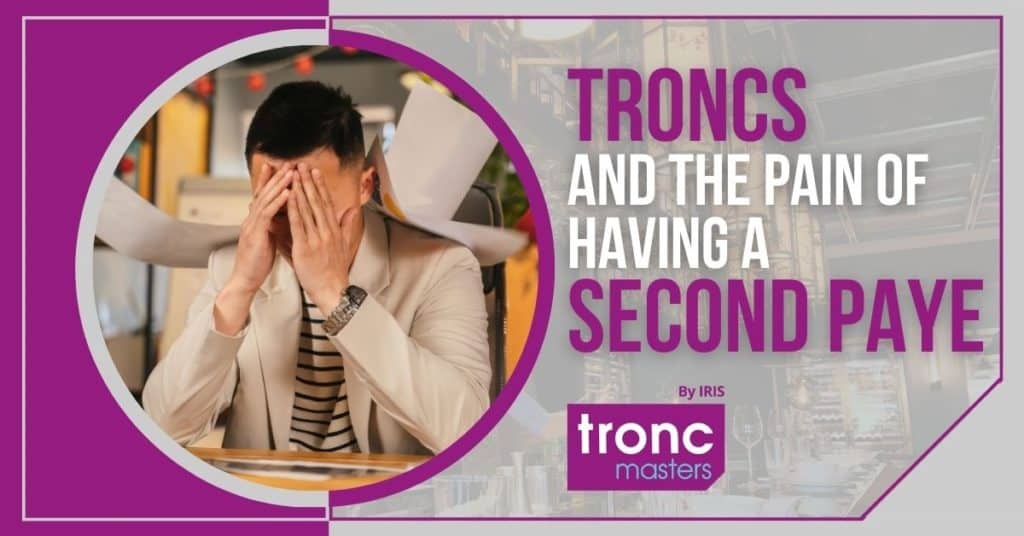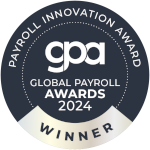
Some hospitality businesses are making things more difficult for themselves and their employees, but they don’t know it.
At the heart of the problem is a second Pay As You Earn (PAYE) system, which causes tax issues for staff and unnecessary red tape for employers.
When this backfires, there’s panic, payroll errors and low morale. Staff worry when they get letters from HMRC, or, worse, they find themselves paying too much tax and don’t understand why. Meanwhile, the payroll team feels overworked as resources and time are stretched paper-thin to deal with the extra work.
So, why do many businesses have a second PAYE in their payroll process when they don’t need one? We think the main reason is some unclear wording from HMRC.
What HMRC said that caused confusion
HMRC set out guidelines that are ambiguous at best if you don’t manage troncs as much as we do.
In their E24 booklet, they say:
A troncmaster with a PAYE scheme may use the employer’s payroll to operate PAYE on their behalf (the employer effectively acting as a payroll agent), but the troncmaster’s PAYE records must be kept separate from the employer’s.
This wording is not helpful. The first impression you get is you need two payrolls. That’s not true.
There’s a difference between a PAYE scheme and a troncmaster’s PAYE records.
When you read it again, with this in mind, the passage makes more sense. But for those who don’t specialise in troncs and don’t have in-house lawyers, the “safest” move might feel like the smartest one. Even though you and your staff might be losing out.
Why a second PAYE for your tronc can be a choice for businesses
Businesses might choose to have a second, separate PAYE system.
The first reason is that many troncmasters are internal. For a tronc scheme to work flawlessly, the record-keeping has to be kept outside of the business for it to work (such as with an external troncmaster) – or, alternatively, the payments must be made from outside of the business, meaning a separate bank account and therefore separate PAYE scheme .
An internal troncmaster cannot allocate the money from outside the business. Therefore, a lot of the time, they must have a separate PAYE and bank account. The only way this can be avoided is to keep records using a separate network and compile all the information before it goes on the payroll. However, for security reasons, this isn’t often allowed to happen; businesses need this information in one safe place.
The second reason is that a business might want to ringfence the money for cash flow purposes. Moving that money to a separate bank account triggers an obligation for it to be a separate PAYE, as it can’t take money from two accounts.
The final reason a business might choose a separate PAYE is to time payments. Some businesses might prefer to stagger the wages and the tips payments on different dates. Such an arrangement can help young staff, like students, as they develop their budgeting skills during their first time living independently.
But is a second PAYE really the best choice?
Despite these reasons, I think you’ll agree that it is more complex to have two simultaneous PAYE schemes. It’s more admin and paperwork overall, and it doubles the chances something will go wrong. That’s not just from a payments standpoint but in terms of having a compliant tronc scheme.
And what about the staff? They are arguably most affected by whichever PAYE regime you choose.
Having a single PAYE serves them well. There’s less hassle, they get everything on one payslip, and regular tronc payments can be considered a reliable part of their income.
Choosing to have a second PAYE can cause serious issues for your workers at HMRC’s end. Their systems cannot see the difference between a tronc PAYE and a second job. So, their computers can sometimes assume people have two jobs and split their personal tax allowance.
Conversely, they can be mistakenly given double their allowance.
Of course, that means a staff member ends up either overpaying or underpaying tax. They then have to go and fill out paperwork at the end of the tax year to set things right – a task that involves stresses on a level usually reserved for businesses. They can also receive lots of letters from HMRC throughout the year, advising of new tax codes, which can be confusing and stressful. As much as this is not specifically the fault of the employer, employees will see it that way.
The easy answer
We think the best and easiest answer to all this confusion is simple: hire an external troncmaster.
At Troncmasters, our qualified, experienced team is always here to help. We will work out what the best setup is for you and make sure your business and its staff avoid any PAYE pitfalls.
When you appoint an external troncmaster, allocations of tips and service charges happen outside of the business, ticking the right boxes for a successful tronc and ensuring payments can happen from inside the business, all on one payslip.
It’s also less painful for staff and less stressful for their bosses – an external troncmaster takes the data security and associated compliance duties away from in-house staff, not to mention remain un-biased in deciding allocations.
If you want happier workers, less financial admin, streamlined payroll and the need for only one bank account, then it’s a powerful solution.
And at Troncmasters, we bring our cutting-edge solutions and decades of know-how to this process.
As a digitally innovative company with a data-first approach, we make sure that you’re not left waiting for your tronc allocations – our speedy turnaround will ensure that payroll runs like clockwork for you.
If you would like to speak to one of our experience Troncmasters please contact us
